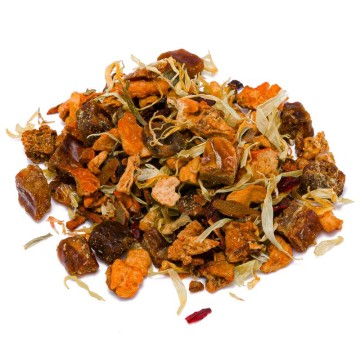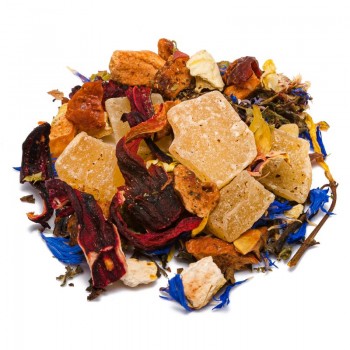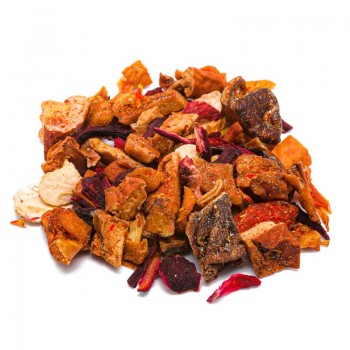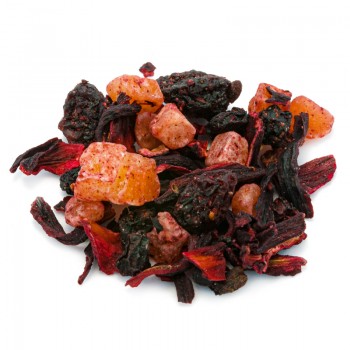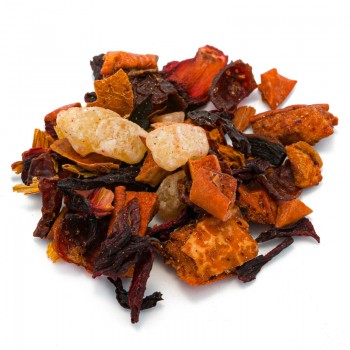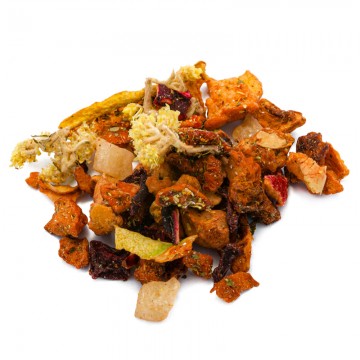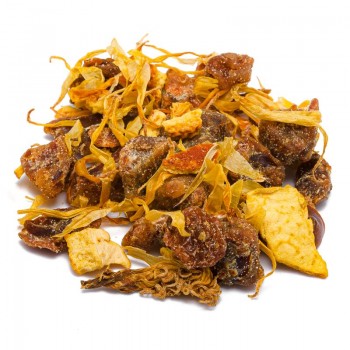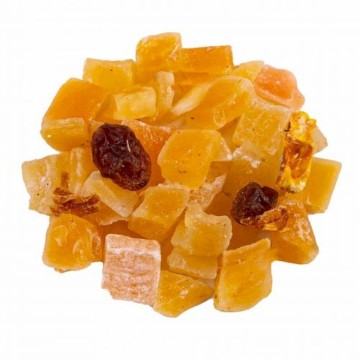This blend bases its flavor on apple, even in the quince version, and broadens the fruity notes thanks to grapes and rosehip, with the citrus touch of orange and lemon. A sweet delight that is enhanced by the warm aroma of cinnamon and vanilla spices, with the final floral nuance of jasmine. A pleasant mix that evokes strudel, apple pie, combining sweet and spicy flavors to seduce the palate with a gourmet infusion. Perfect to enjoy in a moment of relaxation, for its scent and the benefits it brings. It is an "eat and drink" herbal tea, since at the end of the tasting, you can eat the dehydrated fruit with pleasure.
Apple strudel infusion: properties and benefits
By taking this infusion you get the benefits of fruit and the intense aromas of spices. The apple, the main ingredient, promotes digestion by helping the stomach and intestines in the transit of food. An action enhanced by the presence of cinnamon, orange peel and lemon - ingredients that promote digestive well-being and help eliminate intestinal gas. Minerals and antioxidant compounds are released from the apple and other components such as grapes, jasmine and rosehip.
Origins and history of cultivation
The apple is one of the best-known fruits in the world, both on the table and in art with its symbolism. Its history begins in Asia, in the mountains of Kazakhstan, where the original wild tree that gave rise to the species (Malus sieversii) can still be found today. The plant was cultivated by man many centuries ago, and then spread via the Silk Road among different populations. The tree evolves rapidly, through interbreeding between different groups or human hybridization - a process in which tree branches are "grafted" to other trees.
Historically we know many apples, from the symbolic ones in literature and art to the real cultivations which have thousands of varieties. Each cultivar is appreciated not only for its taste but also for its use: apples suitable for cooking, raw consumption, the production of juices or cider, etc. The famous apple pie "strudel" is an apple-based recipe that comes from Trentino, and in turn from Hungarian and Turkish cuisine (from baklava). The basic ingredients are apples, pine nuts, raisins, sugar, breadcrumbs and some flavorings such as lemon and cinnamon. For this reason, our apple strudel infusion is very similar to the original strudel mix.
The quince present in the infusion, however, is not a variety of the apple but a fruit that comes from a different plant, always from the same apple family. It has a pleasantly acidic flavour, and has been known for millennia in the East – it is native to Western Asia. It looks like a hybrid between a pear and an apple, a symbol of love and fertility.
Fruits and other ingredients
The Malus domestica plant of the Rosaceae family gives us apples. The plant generally has dimensions of up to 9 meters in height and the same in diameter. The leaves have an oval shape and the flowers are white, often tinged with pink. The fruits vary in color and in many varieties, in size, color and consistency of the pulp. The quince comes from the Cydonia oblonga plant, which belongs to the Rosaceae family and the Cydonia species. The fruit shows a yellow or light green color, with a skin with light fuzz and a compact pulp.
The rosehip is the fruit of the dog rose, a variety of rose - a perennial plant of the Rosaceae family. It is also called scrub rose or wild rose, and is very widespread in Italy. Rosehip is a false fruit, red in color, with a fleshy consistency. It contains the achenes, the true fruits, inside.
Citrus sinensis, belonging to the Rutaceae family, is the sweet orange tree. Born as a hybrid between the pomelo and the mandarin in China, it has undergone various evolutions over the centuries. Today there are many varieties of orange developed, and sweet oranges are distinguished from bitter oranges.
Lemons grow from the Citrus limon tree, of the Rutaceae family. It grows best in tropical climates, with heat and humidity, while it is a tree sensitive to cold. There are many varieties of lemons, over 20 different types grown all over the world.
The grape comes from the Vitis vinifera plant, belonging to the Vitaceae family. It is a climber that can easily cover walls and surfaces. It develops large leaves and tiny green flowers. The fruits are the berries grouped in bunches of grapes, different based on the variety of the vine.
The botanical name of the cinnamon tree is Cinnamomum zeylanicum. It is an evergreen tree of the Lauraceae family, with a barkwhich gives it high aromatic properties. It grows in moist, well-drained soil, and reaches about 15 meters in height.
Vanilla comes from the climber Vanilla planifolia, of the Orchidaceae family. The fruit is a long capsule: seeds and vanilla flavor are extracted from the pods. The Bourbon Vanilla present in the infusion grows on Reunion Island (formerly Bourbon Island) and in Madagascar.
Jasminum or jasmine is famous for its fragrance and belongs to the Oleaceae family. The plant comes in different species (about 200) and varieties. Many are summer flowering climbing plants, others are indoor plants. Jasmine flowers are small and star-shaped, generally white or pale pink.
Nutritional values of the apple strudel infusion
This infusion makes minerals such as magnesium, sodium, potassium available. Other beneficial groups are the antioxidants contained in the different ingredients. How to use the ingredients in the infusion
The infusion is obtained by placing approximately 3-5 grams of the apple strudel mixture with water at 100 °C in a cup (250 ml).
Leave to infuse for 10 to 12 minutes before drinking. Add honey or sugar, if desired.
Apple strudel infusion: side effects and contraindications
To avoid unwanted effects it is necessary to respect the recommended doses and not exceed the consumption of the infusion for too long periods. Excessive intake can cause diarrhea, nausea, headaches and gastrointestinal disorders.

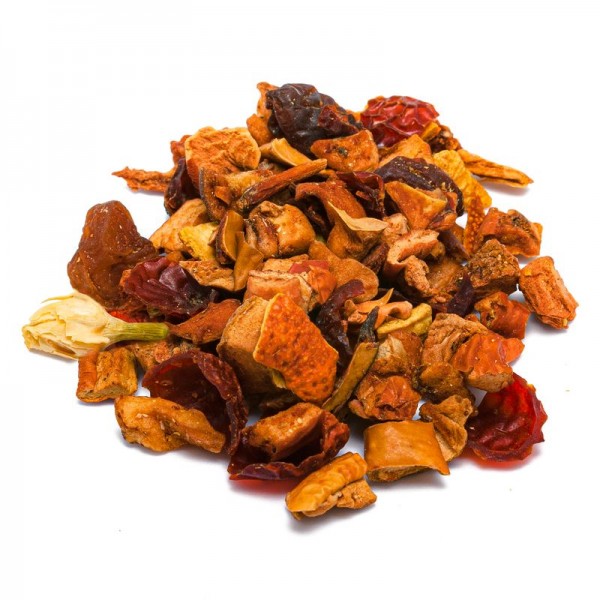









 No reward points for this product.
No reward points for this product.
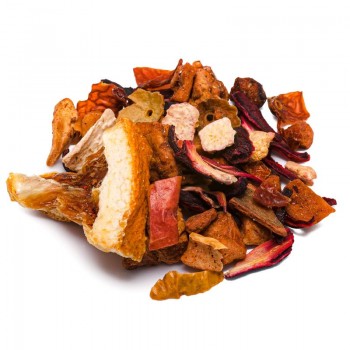
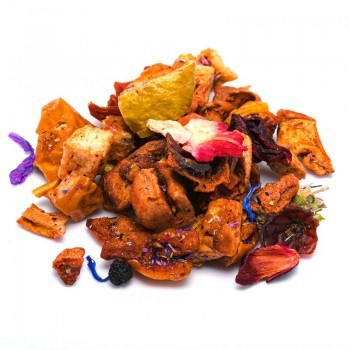
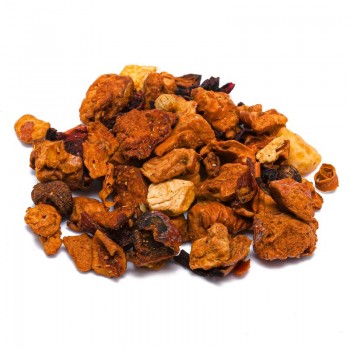
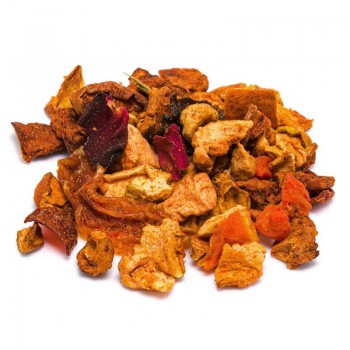
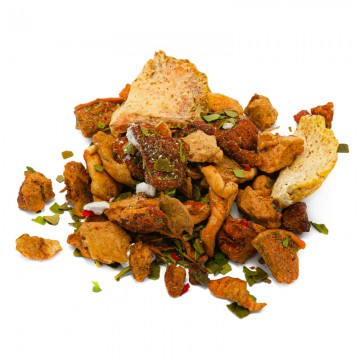
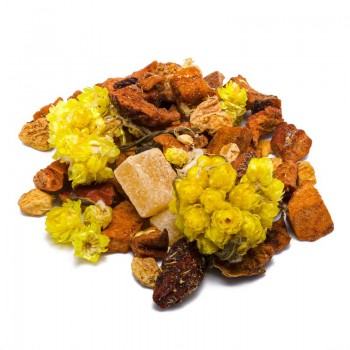
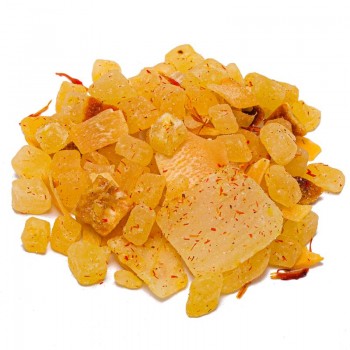
![infuso lime mirtilli rossi [Natura d'Oriente]](https://www.naturadoriente.com/3551-home_default/lime-infused-cranberries.jpg)
